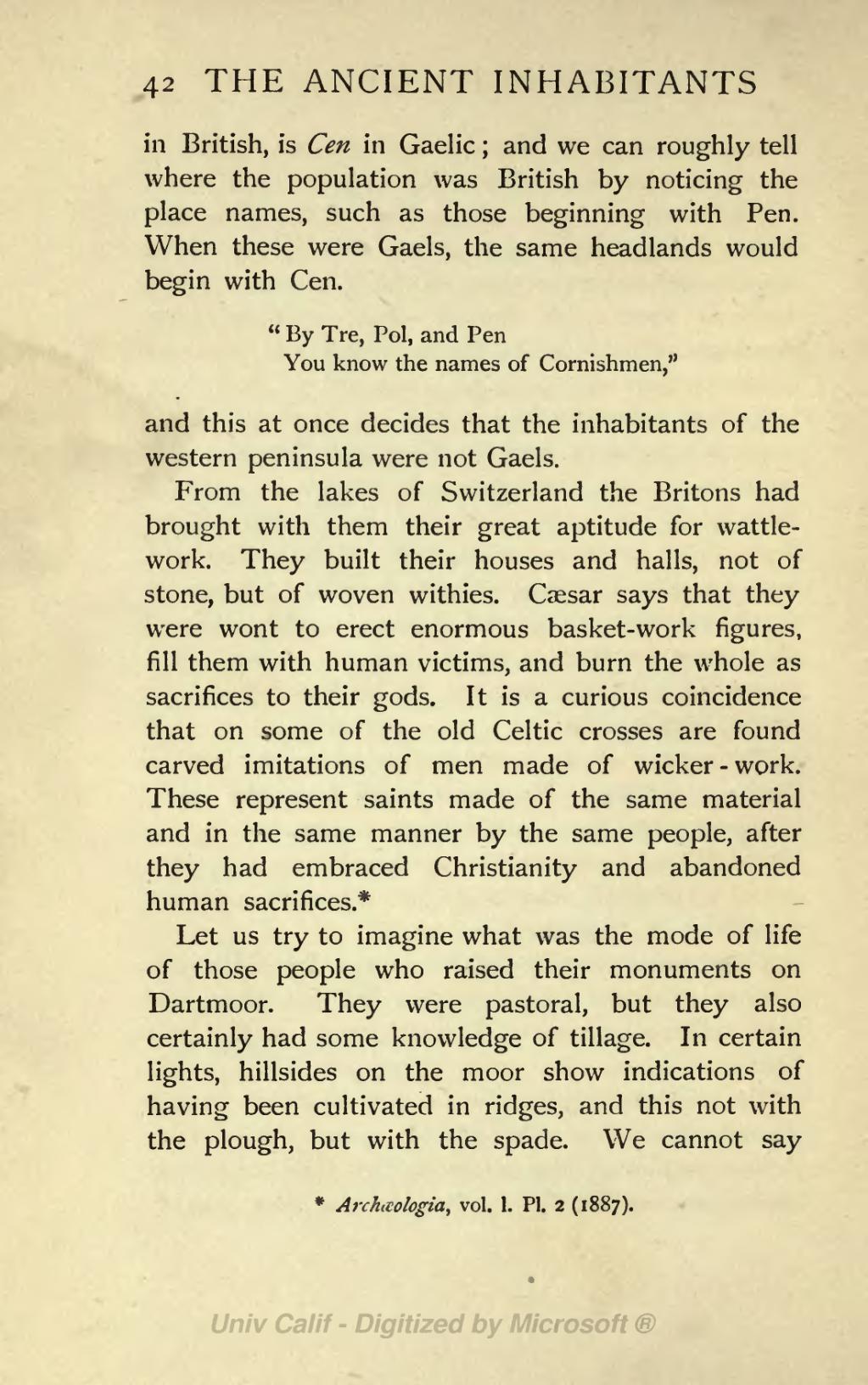in British, is Cen in Gaelic; and we can roughly tell where the population was British by noticing the place names, such as those beginning with Pen. When these were Gaels, the same headlands would begin with Cen.
"By Tre, Pol, and Pen
You know the names of Cornishmen,"
and this at once decides that the inhabitants of the western peninsula were not Gaels.
From the lakes of Switzerland the Britons had brought with them their great aptitude for wattlework. They built their houses and halls, not of stone, but of woven withies. Cæsar says that they were wont to erect enormous basket-work figures, fill them with human victims, and burn the whole as sacrifices to their gods. It is a curious coincidence that on some of the old Celtic crosses are found carved imitations of men made of wicker-work. These represent saints made of the same material and in the same manner by the same people, after they had embraced Christianity and abandoned human sacrifices.[1]
Let us try to imagine what was the mode of life of those people who raised their monuments on Dartmoor. They were pastoral, but they also certainly had some knowledge of tillage. In certain lights, hillsides on the moor show indications of having been cultivated in ridges, and this not with the plough, but with the spade. We cannot say
- ↑ Archieologia, vol. 1. Pl. 2 (1887).

